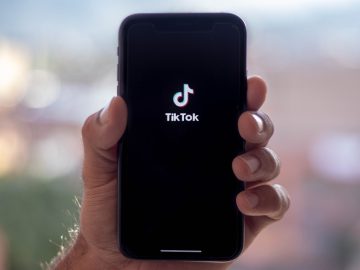Introduction
Temu has taken the e-commerce world by storm.
Launched in 2022, it skyrocketed into the top of U.S. app store charts within months, riding the wave of ultra-low prices, free shipping, and a gamified shopping experience. Backed by the Chinese tech giant PDD Holdings—also the parent company of Pinduoduo—Temu is now shaking up global e-commerce with a bold, discount-first strategy.
In this article, we’ll break down how does Temu make money (despite selling products for pennies). From commissions and logistics to advertising and data, you’ll get a full view of Temu’s revenue model—and what might make or break its long-term success.
What Is Temu?
Temu is an e-commerce platform launched in September 2022 by PDD Holdings, the same parent company behind Pinduoduo, one of China’s largest online retailers.
Temu started by targeting U.S. consumers with shockingly low prices, often offering items for under $5—shipped for free. It has since expanded to multiple global markets, including Canada, Europe, and Australia.
Unlike traditional retailers, Temu doesn’t hold inventory or act as a seller. Instead, it operates as a cross-border marketplace, connecting overseas manufacturers (primarily Chinese suppliers) directly with international consumers. This lean, asset-light model allows it to scale quickly and keep costs low.
Temu’s main competitors include Amazon, Shein, and AliExpress, but its value proposition is different: it focuses almost exclusively on price, discovery shopping, and a gamified user experience.
Temu’s Business Model Overview
At its core, Temu operates as a cross-border marketplace—a digital bridge between manufacturers (mostly based in China) and consumers around the world.
Rather than holding inventory or managing product development, Temu provides the infrastructure for third-party suppliers to list their goods, manage orders, and fulfill deliveries. This approach mirrors AliExpress and, to some extent, Shein, though each differs in execution.
- Temu positions itself as the ultra-discount platform with a heavy focus on gamified shopping and frequent flash deals.
- Shein controls its own supply chain and designs, maintaining tighter oversight over product quality and styles.
- AliExpress is a broader marketplace with fewer controls on pricing or listing consistency.
To understand this landscape better, it’s worth exploring how Shein’s supply chain strategy compares to other discount marketplaces and what makes Temu’s model stand out.
What sets Temu apart is its end-to-end involvement in the fulfillment process. It doesn’t just connect buyers and sellers—it also controls much of the logistics, payments, and customer service, giving it more influence over the buyer experience and pricing strategy than a typical marketplace.
This hybrid model allows Temu to scale aggressively, while still capturing margins across multiple points in the transaction journey.
How Does Temu Make Money?
Commission on Sales
Temu generates a core portion of its revenue through commissions charged on each sale made by third-party sellers on its platform.
Unlike platforms that simply host listings, Temu takes a more hands-on role—often setting the product pricing itself and standardizing discounts across categories. This means sellers agree to sell at a loss or break-even, while Temu manages the front-facing pricing to attract buyers.
While exact commission rates aren’t publicly disclosed, industry insiders estimate that Temu takes a cut ranging from 15% to 30%, depending on the product category and seller agreement.
The aggressive discounting means profit margins are thin (or even negative) on many items—but the goal isn’t immediate profitability. Instead, Temu uses this model to:
- Control the price perception for consumers.
- Offer consistent ultra-low pricing.
- Prioritize volume and repeat usage over short-term margins.
This approach reflects different types of revenue models businesses can adopt, where upfront loss is a gateway to long-term monetization.
Logistics & Fulfillment Fees
Temu doesn’t just connect buyers and sellers—it plays a direct role in managing the shipping and delivery process through its parent company’s supply chain infrastructure.
Thanks to PDD Holdings’ logistics network, Temu can centralize fulfillment and offer:
- Warehousing and consolidation in China.
- Bulk international shipping via cargo agreements.
- Last-mile delivery partnerships in each market.
While shipping is “free” for consumers, Temu often charges fulfillment fees to sellers to cover part of the cost. This creates an additional, though modest, revenue stream.
By overseeing fulfillment, Temu also gains:
- Greater control over delivery speed and quality.
- More data on shipping performance and customer satisfaction.
- The ability to bundle services to merchants (e.g., logistics + promotion).
Although Temu heavily subsidizes shipping to boost customer acquisition, its infrastructure allows it to negotiate better rates at scale—turning logistics into both a cost center and a monetizable service over time.
This playbook closely resembles how Amazon builds competitive advantage through its logistics and fulfillment operations, reinforcing Temu’s ambition to control more of the e-commerce journey.
Advertising and Sponsored Listings
As Temu’s traffic surges, so does the value of visibility on its platform—and that’s where advertising comes in.
Much like Amazon, Etsy, and Shein, Temu offers merchants the ability to promote their products through sponsored listings, which appear more prominently in search results or curated collections. These placements can dramatically increase sales—especially on a platform driven by impulse buys and gamified discovery.
Here’s how it works:
- Sellers pay for ad space or boosted visibility.
- Temu charges based on cost-per-click (CPC) or cost-per-impression (CPM) models.
- Performance data is used to refine targeting and recommend future ad spend.
While Temu’s ad ecosystem is still developing, it’s a powerful future revenue stream—especially as more sellers compete for limited real estate in the app.
The big difference? Temu handles most product presentation and pricing, so the levers of promotion are more centralized. This gives Temu tighter control over how ads appear and perform.
As its user base grows, expect ad monetization to scale fast, just like it did for Amazon.
Data Monetization (Indirect)
Temu collects a treasure trove of data from every tap, scroll, and purchase on its app—and while it doesn’t sell this data directly, it uses it strategically to strengthen its business.
Here’s how:
- It analyzes consumer behavior (what people click, abandon, or buy) to inform how products are presented.
- It uses purchase patterns to optimize pricing, bundling, and inventory planning.
- It shares performance data with suppliers to improve product offerings and production cycles.
- It leverages engagement data to refine personalized recommendations and keep users hooked.
This type of data-driven feedback loop isn’t about turning user info into a product—it’s about turning data into platform performance.
By using insights from its fast-growing international user base, Temu can:
- Guide suppliers to produce what sells.
- Cut down on low-converting listings.
- Make the shopping experience feel curated and addictive.
The result? Better conversions, happier customers, and more repeat purchases—all without needing to sell user data.
Loss Leader Strategy and Long-Term Monetization
Temu’s rise has been powered by one thing above all: losing money on purpose.
The platform uses an aggressive loss leader strategy, offering:
- Ultra-low prices (often below cost)
- Free international shipping
- Flash deals and discount coupons
- Gamified cashback and referral bonuses
Why? Because Temu isn’t playing a short game. It’s following the classic tech playbook: acquire users fast, monetize later.
This mirrors Uber’s strategic use of loss-leader pricing in its early growth stage—a high-burn approach designed to dominate first and profit later.
Here’s the logic:
- By operating at a loss now, Temu can flood global markets, build brand recognition, and outprice rivals.
- Every new customer adds to Temu’s lifetime value (LTV), especially if they return often and spend more over time.
- Temu bets that its acquisition cost per user (CAC) will pay off as repeat purchases, ad revenue, and seller fees grow.
It’s a high-burn model, similar to what Uber and Amazon did in their early days—backed by deep pockets and long-term thinking.
So while Temu may be burning through cash now, it’s doing so with the goal of building a data-rich, habit-forming platform that can monetize in multiple ways later.
Role of PDD Holdings in Supporting Temu
Temu isn’t just a scrappy startup—it’s the international expansion play of PDD Holdings, a multibillion-dollar Chinese tech giant best known for building Pinduoduo into one of the world’s largest e-commerce platforms.
Here’s how PDD gives Temu an unfair advantage:
Supply Chain Power
Pinduoduo’s deep relationships with Chinese manufacturers allow Temu to access ultra-cheap products with factory-direct pricing.
Logistics Infrastructure
Temu benefits from PDD’s established logistics network, which includes warehousing, shipping partnerships, and last-mile delivery expertise—reducing fulfillment costs at scale.
Data & Algorithmic Muscle
Temu applies PDD’s advanced data tools to optimize:
- Pricing strategies
- Product placements
- User engagement features (like gamified promotions)
Massive Financial Backing
Temu has access to PDD’s huge war chest, enabling it to run prolonged loss-making campaigns without panicking investors.
In short, Temu isn’t building alone—it’s standing on the shoulders of one of China’s most successful digital commerce giants. That’s a big reason why it’s been able to scale so quickly across global markets.
A useful comparison here is Lazada’s approach to cross-border e-commerce marketplaces, which shares similarities in connecting local buyers with overseas suppliers.
Key Costs That Impact Profitability
While Temu is scaling fast, its road to profitability is paved with high operating costs—many of which are strategic bets on long-term growth.
Here are the major cost drivers:
Logistics & International Shipping
Despite offering “free” shipping to customers, someone has to foot the bill—and that’s usually Temu. Cross-border delivery is expensive, especially with short timelines and high volume. Subsidizing shipping cuts into margins quickly.
Marketing & Customer Acquisition
Temu spends heavily on:
- Social media ads (particularly TikTok and Instagram)
- Influencer campaigns
- Referral bonuses
- App install incentives
This keeps user growth high—but at a steep price.
Returns & Refunds
With low-cost items and long shipping times, customer satisfaction can be tricky. Temu handles a large number of returns and complaints, often issuing refunds with no product return required, which increases loss rates.
Customer Support
To compete in developed markets, Temu invests in multilingual customer service, including 24/7 support via chat and email—another non-negligible cost.
In short, Temu is spending a lot to build loyalty, trust, and scale. These costs are intentional—but they’re also the biggest obstacles to profitability.
Is Temu Profitable?
Short answer? No. At least, not yet.
Temu is still operating at a significant loss, and that’s entirely by design. According to recent reports, the company is spending hundreds of millions of dollars per quarter on marketing, subsidies, and logistics to maintain its breakneck growth.
But there’s a method to the madness.
Analysts believe Temu is following a “blitzscaling” strategy: grow first, monetize later. The idea is to:
- Build a massive user base
- Crush price-sensitive competitors
- Establish supplier dominance
Once that’s done, Temu can gradually raise prices, reduce subsidies, and increase ad monetizationwhich could make the business model profitable in the long term.
Still, there’s risk. Sustaining this burn rate requires deep pockets (thankfully, PDD has them), but the pressure to show a path to profitability will intensify as investor scrutiny grows.
So while Temu isn’t profitable in 2025, it’s betting on scale + stickiness to get there.
Conclusion
Temu has flipped the traditional e-commerce playbook on its head.
Instead of starting with profit, it’s starting with dominance—offering rock-bottom prices, free shipping, and a dopamine-fueled app experience to win over millions of users around the globe.
Its business model is built around:
- Charging commissions to sellers
- Earning logistics and ad revenue
- Using data to optimize everything
- Backing it all with PDD Holdings’ muscle
But it’s not profitable—yet. Temu is playing the long game, betting that high upfront costs will pay off through scale, loyalty, and monetization layers (like ads and premium placements) once its global footprint is secured.
The big question isn’t can Temu make money. It’s when—and whether its ultra-aggressive model can outlast rising competition and cost pressure.
FAQs
Is Temu owned by a Chinese company?
Yes. Temu is owned by PDD Holdings, a multinational commerce group originally based in China. PDD is also the parent company of Pinduoduo, one of China’s biggest e-commerce platforms.
Does Temu sell directly to customers?
No. Temu operates as a marketplace, connecting third-party sellers (mainly manufacturers from China) with consumers around the world. Temu manages the platform, pricing, and logistics—but it doesn’t hold inventory or manufacture products itself.
How does Temu offer such low prices?
Temu leverages direct factory access, bulk shipping, and heavy subsidies to offer ultra-low prices. Many items are sold at or below cost to attract users and build market share. It’s a classic loss leader strategy.
Is Temu profitable in 2025?
No. As of 2025, Temu is still operating at a loss. However, it’s doing so strategically—investing in customer acquisition, logistics, and market expansion with long-term profitability in mind.






